Regular-looking mold is disgusting enough, but slimy orange mold is more disgusting. This mold may grow on a lot of surfaces, from the bathroom to wood and even food.
The appearance is slimy and not fuzzy like the more common types of mold, and people are understandably upset when seeing it in their house. Make sure you know what to do when finding this kind of mold in your house or food.
What is Orange Mold?
Orange mold is generally not a single type of species, but more like a colony of single-celled organisms. This mold may grow together with some other mold types, such as green mold or black mold, especially on food.
The Orange mold may look like small spots in its initial stage of life, but becomes large slimy colony when it reaches the later stage.
Orange mold often appears in damp and humid places, such as bathroom and shower. However, it may also appear on wood, bread, cheese, yogurt, and hidden structures in the house.
Is Orange Mold Dangerous?
Orange mold is generally not a life-threatening species, but it does look disgusting and unpleasant. If it grows uncontrollably, it can damage your house structures and reduce its market value.
Also, if you have weak immune system, allergy, or respiratory problems, you do not want to have any type of mold inside your house.
Orange mold can also ruin your water. If it grows in water filter, water container, pipes, or near the sink faucets, it can ruin the taste of your tap water.
Mold on foods can also spread to other foods in the container or fridge, so your food supplies will definitely be ruined.
Orange Mold in Shower and Bathroom
Shower and bathroom are understandably favorite habitats for mold. They are humid, wet, and are perpetually dirtied by shampoo or soap residue left after you are washing your body.
However, the orange mold is more common in bathroom or shower that is constantly exposed to water with high acidity or mineral content (hard water).
Orange mold can also appear inside the toilet bowl, especially because the water is full of bacteria. If you do not flush properly, do not be surprised if you find orange stain inside the toilet bowl, which is likely to be orange mold.
Orange Mold on Wood

Orange mold, like yellow mold, is very common in outdoor. It can appear on the wood surface, compost heap, or grass. The appearance is slimy so that it can be mistaken with animal feces or vomit.
While it may look disgusting, it is not really dangerous. However, a large amount of orange mold between plants or mulch can suffocate the plants, or disrupt the healthy growth.
Mold can also grow on wooden structure inside the house. It can appear on surfaces like floor, beams, or foundations. If the mold appears in a large amount, it can damage the structure and release the musty smell.
It can also cause health problems for people with allergies or respiratory problems, especially if they come into contact with the mold every day.
Orange Mold on Food and Cheese
Food, especially bread, cheese, and other dairy products, are fertile grounds for mold. The Orange mold may grow on cheese or bread, both on the surface and inside the food.
While healthy mold may eat a little of the mold and do not get sick, remember that a mold is also a place for bacteria activity.
Mold can grow if the foods have several qualities for ideal habitats. For example, the foods may be stored in a warm container, or uneaten until past their shelf life. For your safety, never eat any food that already has mold, even if you can “eat around the mold”.
Orange Mold on Wall
Wall is not a strange place to find orange mold. Mold can grow when there is leakage or moisture problem, which later creates an ideal habitat for mold.
It can even grow behind walls, so you will not be able to immediately see the mold growth until it becomes bigger and smellier.
Like bathroom or shower, walls that are often exposed to high acidity water can show signs of orange mold growth (although the orange stain you see might not always be mold).
If you live in an area where the rain has high acidity level, the orange mold may often appear.
Buildings in areas that are often flooded also show signs of mold growth. If you do not clean your house professionally, there is a huge possibility of mold growth on your walls, including orange mold.
How to Get Rid of Orange Mold
There are several methods to remove and prevent the growth of orange mold, depending on where the location is. Here are some tips you can try:
-
Keep the bathroom and shower dry
Clean your bathroom and shower regularly, and install good ventilation and fan. These last two objects will help to keep the bathroom and shower dry.
-
Flush properly
After using the toilet, make sure you flush properly (repeat if necessary). This will help to fill your toilet with cleaner water, reducing bacteria activity that will cause the growth of orange mold.
-
Use water softener
If your plumbing releases hard water, you can try “softening” it by reducing the ion effects in the water using a water softener, such as polyphosphate system. An oxidizing filter also works well.
-
Use hydrogen peroxide or vinegar solution
Vinegar or hydrogen peroxide solution can help cleaning small mold problem. Mix 1 part of this ingredient and 3 parts of water, and spray it to the mold. Let it soaks for 10-15 minutes, and then scrub. Repeat this step two or three times.
-
Clean the fridge/container and remove all foods
If you have a mold problem in the fridge or food container, you should remove the moldy foods as soon as possible. Remove other foods and clean the space, so the mold will not spread to other foods when you put them back.
If you experience mold problem more than 10 square feet of size, call professional service for maximum cleaning. The same goes if your house is flooded.
The Orange mold may not be as hyped as other mold types, but it is still a problem for your house. Make sure to clean orange mold properly and create a non-ideal environment for mold in your property.
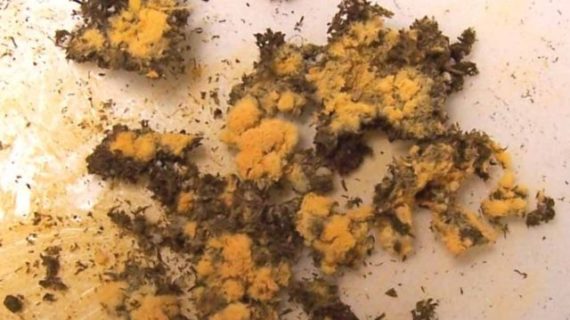
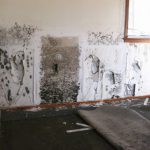
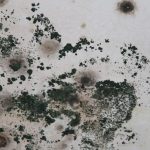
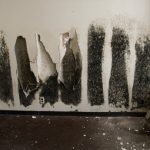
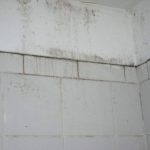
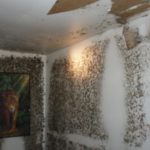

We have an out building that started to get yellowish brown spots on walls and ceiling.my husband wiped it down once and it’s back . We want to make this an home office but with the spots coming back . How do you get rid of it? Do you wipe down then use Katz paint then repaint ?
I have a similar problem in laundry room under/in utility tub cabinet, walls and floor. Any response on this. The stuff is not really too slimy almost dry and looks light brown/orangy in color.
Hi I have had a leak from a flat upstairs. And woke up this morning to orange stuff growing in the crease of the ceiling what is it.
I use a plastic coffee can to put my used wet coffee grounds in until I throw them away. I have been finding a orange spongy mold on the grounds after a few days. Anyone know what it is? It’s low acid decaf coffee grounds. I’m not buying it again!!!